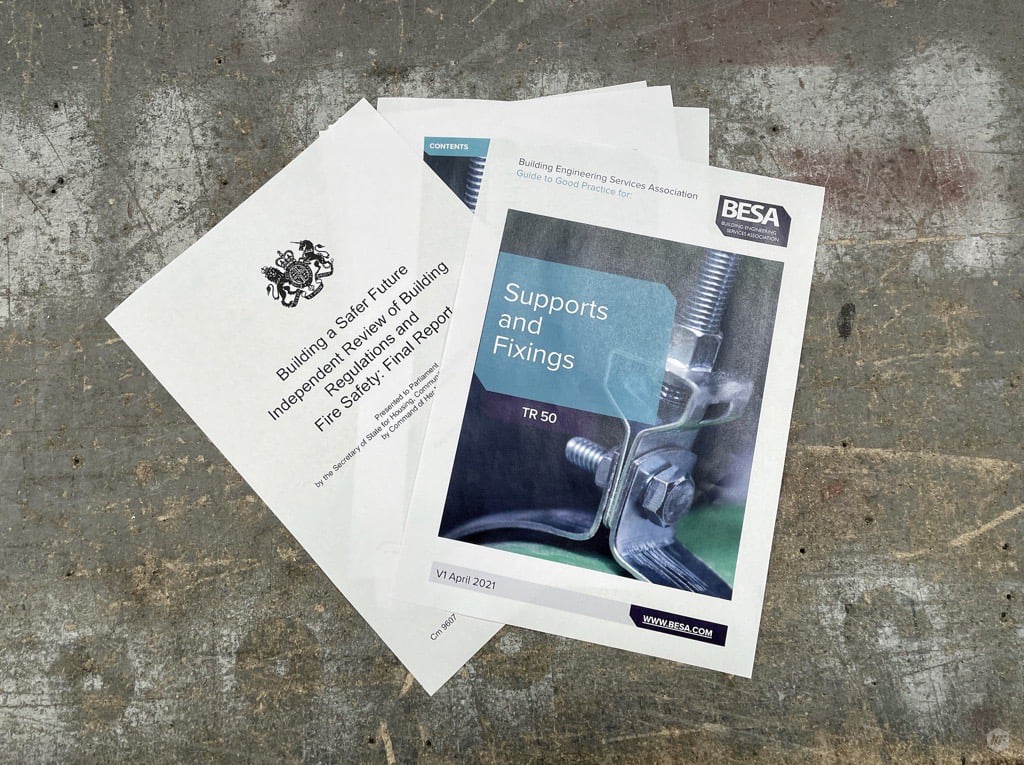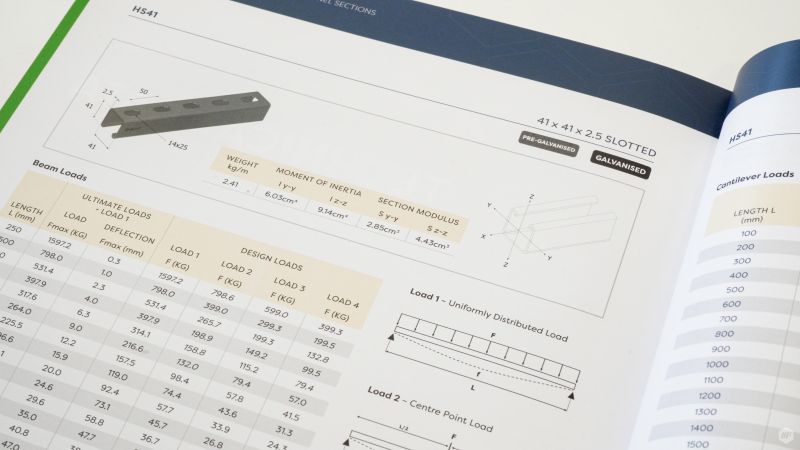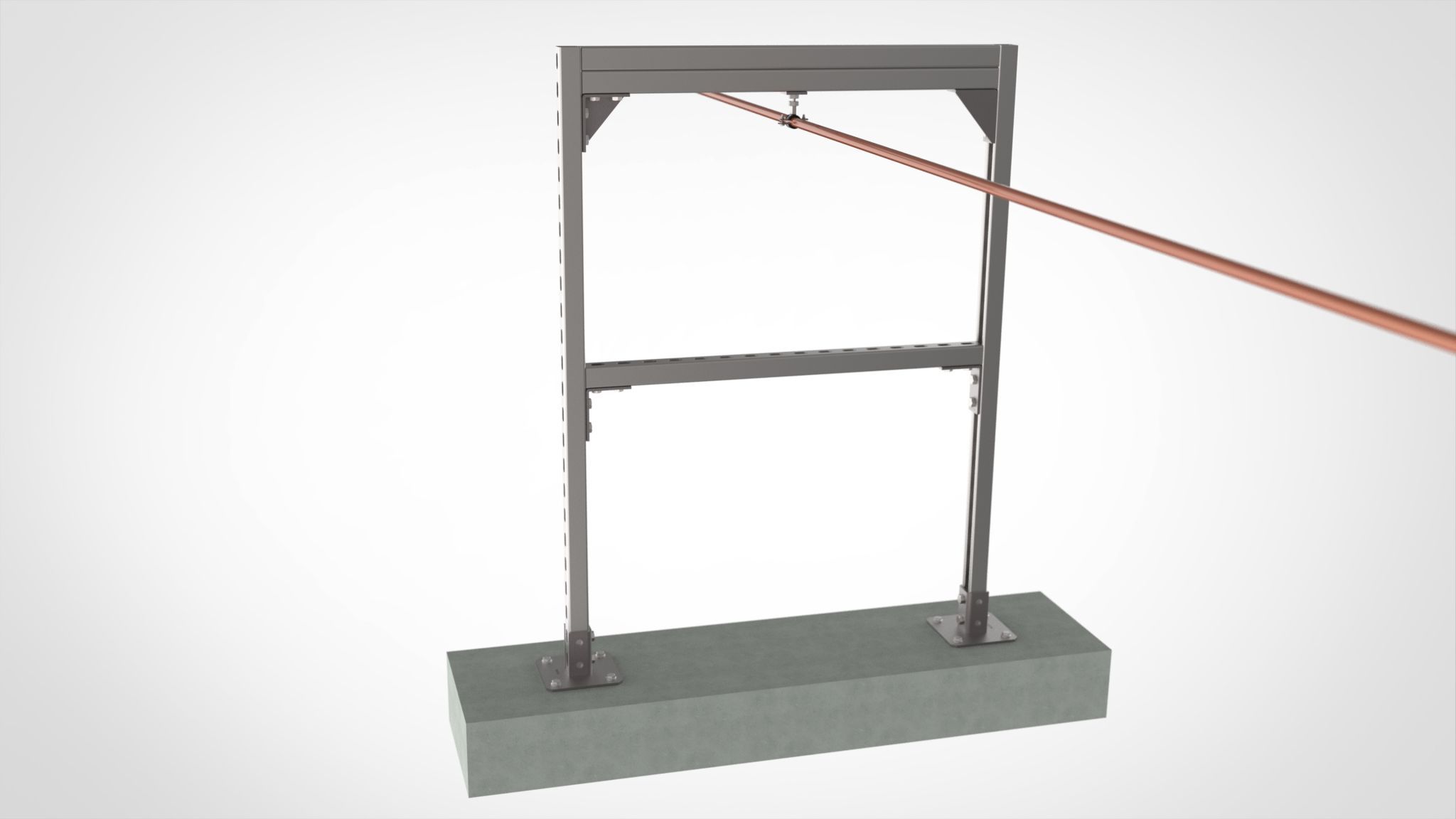‘Tested channel systems’ is slowly but surely becoming a recognised term in M&E.
With the recent introduction of our MX Channel System, we’ve been hearing some concerns and comments from those in the industry about adopting the principles of this system.
The good news is that many of these concerns aren’t really concerns at all, but misconceptions. These include:
- 'Tested channel systems aren't necessary because channel is a commodity item'
- 'I've always done it this way, so there can't be anything wrong with it'
- 'I don’t need a tested channel system because regulatory compliance is just for designers.'
- 'A tested channel system means that the final assembly should be tested.'
- 'I can just use the manufacturer's channel section data.'
- 'There is no need for a tested channel system because I can just overengineer.'
- 'I wouldn't use a tested channel system because of the risk of a single source of supply.'
Allow us to clarify some of the confusion and dispel these myths for you.
-
“Tested channel systems aren’t necessary because channel is a commodity item.”
Many contractors often prioritise cost-saving over anything else and treat channel and fittings as commodity items. Even when something has already been specified, they will try to look for a cheaper alternative, and that’s really not how it should be.
There’s a reason why that particular product has been specified, so it makes no sense to change it. Plus, you need to remember that you’ll have to go through the change management process if you do choose a different product. This will also make you the specifier, holding you responsible for any issues that arise.
To quote Dame Judith Hackitt from her 2018 report “Building a Safer Future: Independent Review of Building Regulations and Fire Safety”: “Principal contracts and clients should devise contracts that specifically state that safety requirements must not be compromised for cost reduction”.
The BESA TR50 concurs with this, and the principles apply not just to anchors, but across all things construction: “[Supports and fixings] are often considered as commodity items where procurement decisions are made solely on price, or worse still, changed on site without any knowledge of the implications.”

In some cases, manufacturers may charge a premium rate for a tested channel system. Although, there are systems out there, such as the MX system, which are sold at standard market rates of channel.
Besides, in the long run, you could be saving a considerable amount of time and money because you know that your bracket is fit-for-purpose and you have the evidence to prove it. It’s also much more efficient to prevent any mistakes upfront rather than have to change anything retrospectively.
-
“I’ve always done it this way, so there can’t be anything wrong with it.”
This is a radically flawed view because there are so many outdated practices in the industry that are no longer effective, but are still used all the time because the installers aren’t trained or competent. The Hackitt report concurs with this.
“While there are many instances of competent people, there is no consistent way to assess or verify their competence. The current approach to levels of competence is disjointed and in places not rigorous enough. This allows individuals to practice with questionable qualifications or without a requirement for competence to be assessed, accredited and reaccredited.”
- Dame Judith Hackitt, 2018
I mean doesn’t the fact that you have been doing something for so long just indicate that, maybe just maybe, it’s time for things to change? We’ve all heard the phrase “there’s always room for improvement” and that’s never been more true.
But it’s understandable – after all, we’ve equally been taught “if it ain’t broke, don’t fix it”! Nevertheless, while errors are rare in our industry, they do happen, so why not put the effort in to correct our mistakes and perfect our techniques? It’s the least we can do and it would be in everyone’s best interest. When your actions and methods could determine people’s safety, you can never be too careful.
If we look at our current approach, people tend to stick to old-fashioned methods simply out of habit and traditionalism – maybe even attachment! But one of the most unreliable practices that we are guilty of is mixing and matching products from different sources without testing them together. You need to demonstrate that the structure you’ve installed can take the load applied to it and that the supports and fixings are fit-for-purpose.
While that may seem okay if they’ve been tested individually (especially because it’s been done for so long), it actually doesn’t prove that the completed bracket would be fit-for-purpose because there’s nothing to suggest that they work well together.
Even if none of your installations has failed before, you have no evidence to prove that you did anything to ensure that. With a tested channel system, this wouldn’t be an issue because you’d have all the data of the components that were tested together, and you will be trained and competent.

-
“I don’t need a tested channel system because regulatory compliance is just for designers.”
It might make sense to say designers are the only ones who should be responsible for regulatory compliance. However, particularly where support bracketry is concerned, that is not the case. They are commonly a last-minute thought and seen as commodity items (see point 1) and are therefore left to site installers to make decisions about the support bracket.
To drive home the point, even where they have been considered in the design stage, Tier 1 contractors are starting to request proof from M&E contractors that the brackets have been installed in line with the design specification and the manufacturer’s guidelines (e.g. connecting joints are tightened to the correct torque value).
So, regardless, it certainly seems that there is an element of regulatory compliance being expected of the contractor responsible for installation.
-
“A tested channel system means that the final assembly should be tested.”
This is a misconception that would understandably deter people from tested channel systems. To expect the final assembly to be fully tested is completely unreasonable and it would make it impossible to design or do anything.
However, that’s not what we are trying to encourage. What we mean is that, with M&E services, common support brackets may vary greatly in terms of dimensions, but not in much else. There are usually just a handful of bracket types used; such as trapeze brackets, goal posts, AHU frames, etc.
On top of that, the connections used in these support brackets are frequent and repetitive. So, for a trapeze bracket, there is a finite number of ways that channel can be connected to a drop rod, and that header rail can be anchored to the substrate.
Likewise, with a goal support, there are also finite variations of how a piece of channel can be connected to another piece of channel, and… you get the gist. What this gives us is a handful of connection types that are commonly used in M&E, meaning there are great grounds for optimisation.

Unfortunately, the majority of individual component data from manufacturers isn’t sufficient to tell how they will work together as it is usually based on their material properties and not physical, application-based laboratory tests (See point 5).
If the data and components come from an identifiable system, then manufacturers can provide independent test data for the aforementioned common connection types. This would allow design engineers to design support brackets that are based on more intelligent and accurate data.
-
“I can just use the manufacturer’s channel section data.”
Very sorry to break it to you, but no, that won’t work. Why not, though?
Most of the time the manufacturer’s load data doesn’t reflect the final installation, it’s not comprehensive enough, and as mentioned, based purely on material properties or single component test data. It might prove that one element or component of a design can perform, but not that it can with the other components that you’ve introduced, nor that the whole bracket can.
The whole movement that we’re trying to encourage here is safety, and more importantly, evidence of safety. People often assume they can use the manufacturer’s data for the channel beam section alone. Unfortunately, that isn’t considered evidence because it usually is based on material properties, hasn’t been by an independent test facility nor does it have the sufficient test data to define its true upper limits.

To add, in cases where it may have been tested by an independent test facility, the data for the channel beam section alone is not sufficient because it doesn’t tell you how it performs with other components when it forms a connection. It’s all good and well believing in your heart that your support bracket will not fail, but does it really count without the proof? 🤷♀️ Speaking of which, our next point touches on this.
-
“There is no need for a tested channel system because I can just overengineer.”
Something that happens quite frequently in M&E is ‘over-engineering’ solutions to ‘make sure’ it doesn’t fail, i.e. deliberately choosing oversized and over-specced materials in the bracket assembly. The issue with this is that you’re still not really proving anything. Overengineering does not equal fit-for-purpose.

Whether something is over-engineered is usually determined by visual judgement rather than science or evidence, and the latter is what makes a bracket fit-for-purpose. Believe it or not, just glancing at something and saying ‘that looks strong enough to me!’ is not quite the proof a principal contractor would be looking for.
As we’ve established, it’s not about lack of failure, but about the evidence of that. Of course, it’s important that a bracket doesn’t fail, though it’s unlikely to happen anyway, but what good is it without the proof that it won’t? You may have a support bracket that can survive a volcano eruption, for all we know. But, the reality is that no one will believe you without the data to prove that.
If that isn’t enough reason, there’s always an optimum point where you can reach the desired result with the least amount of money. Past that peak, spending any more on materials is redundant and wouldn’t make a real difference in the end result.
So actually, over-engineering could be costing you rather than benefiting you. Not only that, but it’s not sustainable, because more material means more embedded carbon.
Tested channel systems are the answer to that – it is the optimised solution that is also backed up by data.
-
“I wouldn’t use a tested channel system because of the risk of a single source of supply.”
This is a sound concern. It’s reasonable to not want to rely on one system for fear of the manufacturer running out of stock, and you thus being in trouble.
Even so, when you start to utilise tested channel systems, that’s not to say you have to commit to just one. Rather, it’s to adopt its principles of being a safe, comprehensively tested, identifiable system.
Whether we like it or not, supply and stock challenges do happen, but thankfully, we have options in the marketplace. If you choose to embrace the principles of a tested channel system (woohoo!) you can then choose the most suitable option for you from your supply chain partners.
Besides, if stock runs out, that’s out of your hands, but if it’s available, it’s up to you to take the initiative and implement the system in your installations. You can only do your best.
Conclusion
If we’re striving for the M&E sector to become more conscious of taking on an evidence-based approach and making buildings safer for the future, then we can all play a part in reaching that goal. Tested channel systems are just one step (albeit quite a big one!) towards it.
It’s all about the bigger picture and being the change that we wish to see. That’s what inspires collective effort, constant development and improvement. And who doesn’t want that?
Hopefully, this article has cleared up some apprehensions you may have and given you a better idea of how much of an impact tested channel systems can actually make. That is, both on you and your installations, and in the grand scheme of things, the future of construction.



